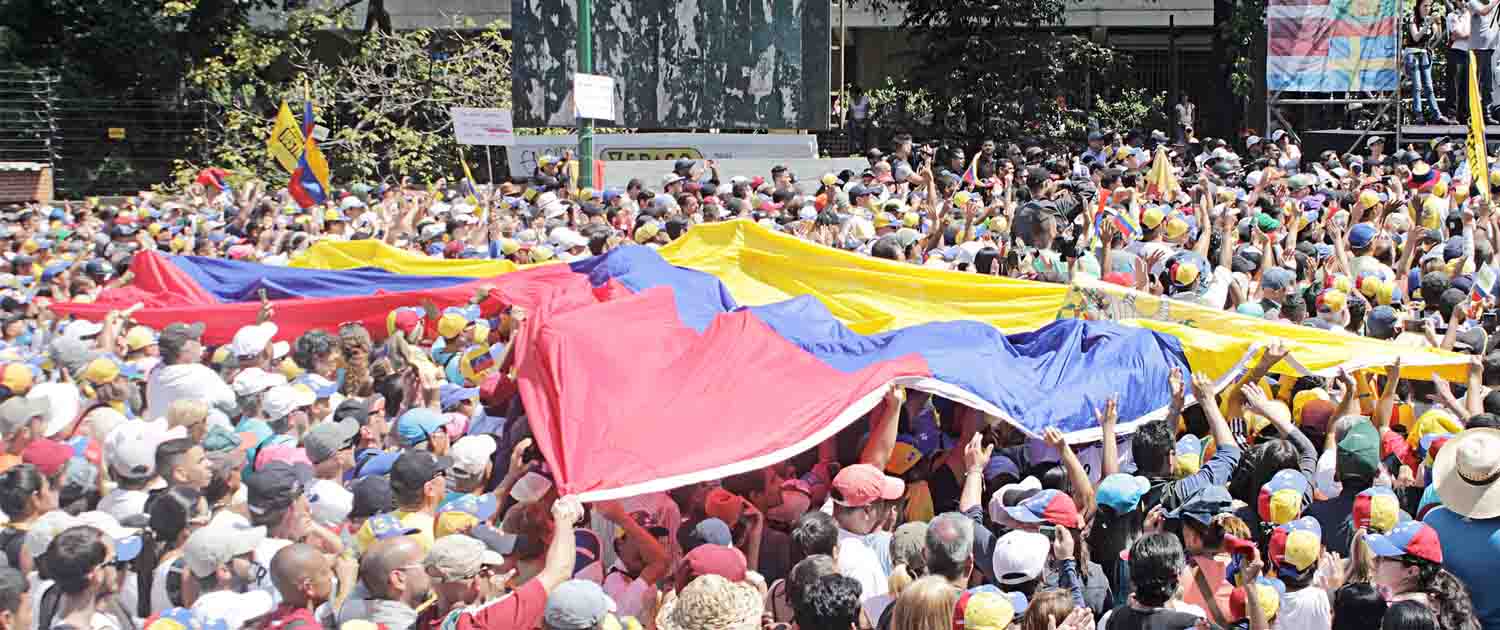On Sunday, 28 July, Venezuelans will head to the polls to elect its next president.
Since 2010, the country has experienced a well-documented socioeconomic crisis that has impacted its energy, health, and legal sectors, culminating in hyperinflation and diminishing quality of life.
The fact that this crisis has been so well-documented is a credit to the local media and civil society groups, especially considering the years of digital repression they have worked in (see below). That said, it has become increasingly more challenging, adding to this repression at a time when the people of Venezuela most need their media to inform them and document the landmark occasion.
While the country has not experienced an Internet shutdown or service-blocking event since 2019, the government has been using subversive censoring tactics that border on blocking essential online services. In the case of the current presidential election, this has included blocking specific political and media sites and barring opposition candidates from traditional media (radio and TV).
The first major digital censorship event in Venezuela happened in 2010 when Blogspot and WordPress were blocked for 48 hours. This was at a time when the government reformed the Telecommunications Law and the State, took control of the telecom market, and froze tariffs controlling equipment imports.
The 2019 political crisis saw several Internet shutdowns and service-blocking events, including Wikipedia, YouTube, and social media platforms. Most disruptions were only observed on CANTV (AS8084), Venezuela’s state-owned and largest Internet Service Provider.
Media and Censorship Sites Blocked During Week of Election
According to the non-government censorship monitoring organization VESINFILTRO, six prominent media sites, including its own sites, were blocked this week (since 20 July).
OONI’s Measurement Aggregation Toolkit (Figure 1) validates the recent censorship claims.
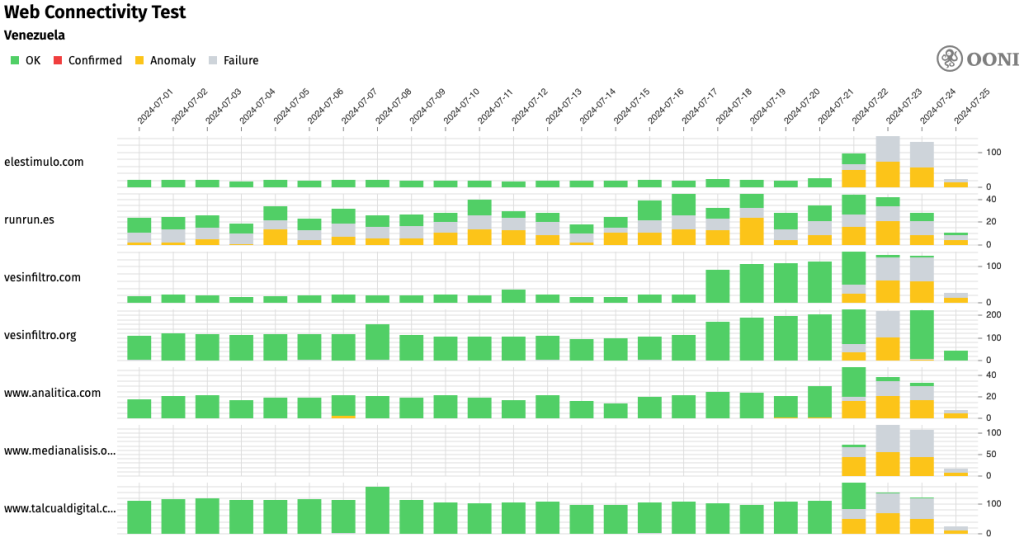
Around 60 websites are currently blocked in Venezuela, including eight media sites and three that fact-check news and misinformation. The most common blocking techniques are HTTP/HTTPS and DNS blocking.
These blocks can be circumvented with a VPN or by changing your device’s DNS preferences to a public service (see AccessNow’s Guide to Bypassing Internet Censorship). VESINFILTRO also has an Android app that allows users in Venezuela to access blocked sites.
It’s important to note that while circumvention tools allow people to access blocked content, the Internet and services they access aren’t optimal, resulting in poorer service delivery. Additionally, their use widens the chasm between those who can access the Internet and the trust between the general Internet user and the government or service provider.
Will Social Media and Instant Messaging Services be Blocked Next?
Because these censorship tactics don’t have as widespread an effect on the country as an Internet shutdown, they have gone on relatively unnoticed. They have also required creative ways for those affected to circumvent them to reach their audiences.
For example, opposition candidates have adapted to these challenges by relying on Instagram and TikTok videos and WhatsApp viral messages. This has raised suspicion that these services will be blocked in the lead-up to or during election day.
At the time of writing, OONI’s Measurement Aggregation Toolkit shows these and other popular social media and messaging services have been uninhibited since the start of the month.
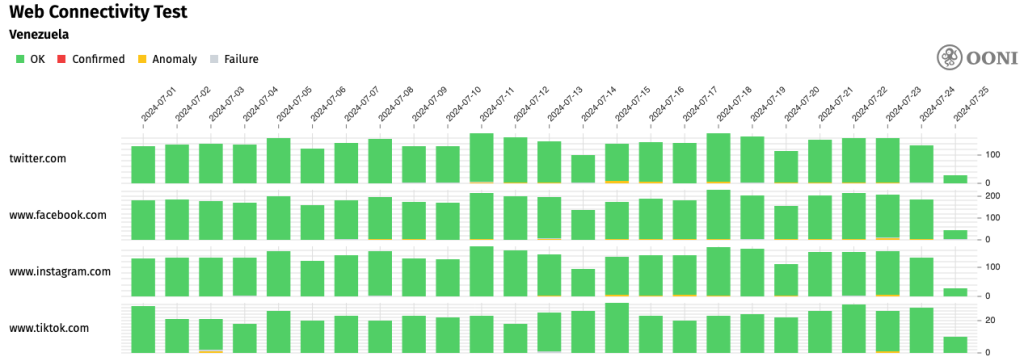
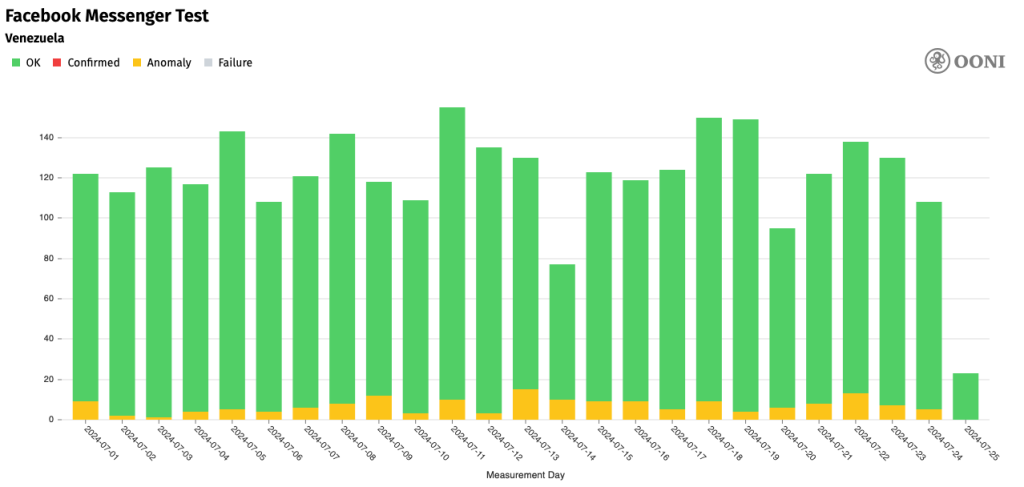
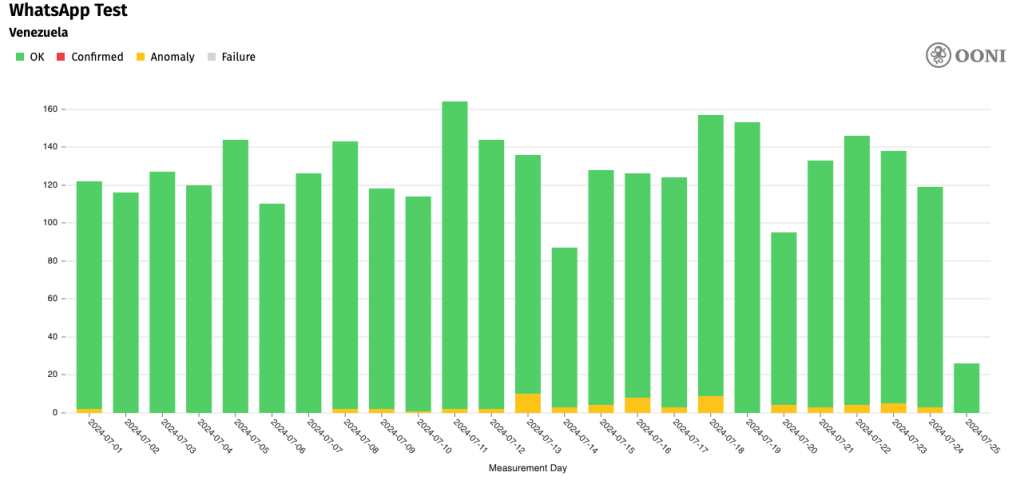
Figure 4 —Accessibility of WhatsApp in Venezuela since 1 July 2024. Source: OONI.
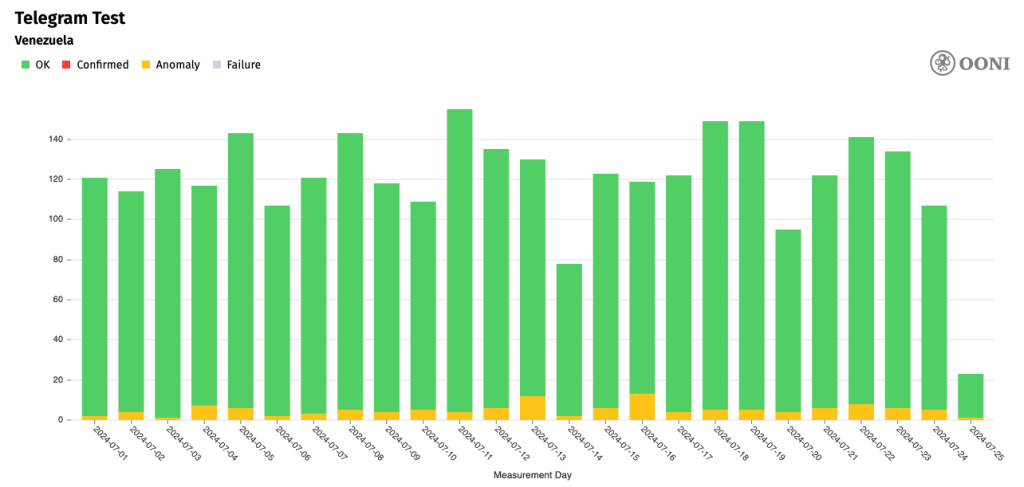
You can measure for these and other websites and services in Venezuela by downloading and running an OONI probe.
So far in 2024, four governments have ordered an Internet shutdown or suspended Internet services during or following elections. We will be watching to see if Venezuela will make it five.

